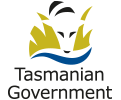Writing for the web: guide
Writing for the Web – i.e. for screens - is quite different from writing for print publications. Because reading text from a computer screen is often more difficult and time consuming than reading from a printed document, readers tend to scan a document, picking out key words and sentences of interest. These guidelines provide some simple rules to facilitate the production of documents that suit an Internet environment.
Three cardinal rules when preparing documents for the web
- Be succinct.
- Write in a way that helps the reader quickly scan or skim read the contents.
- Split large documents into separate files (cf chapters or sections of a print document) and link by hypertext.
Writing style
There are some general principles that should be followed when writing for the web:
- Use plain language (i.e. Standard English) unless you are writing for a very specific audience (eg youth) where a chatty style that uses slang may be acceptable.
- Avoid using bureaucratese or ‘government-speak’. With acronyms or abbreviations, spell them out in full the first time they are used.
- Make text concise and objective. This is particularly important in opening pages. As a general rule, limit the number of words used to half of what you would use for a print publication.
- Avoid using clever or ambiguous headings. Rather, keep headings descriptive.
- Proofread text for spelling and grammatical errors or omitted words. This adds to the quality and credibility of the writing.
Writing techniques
- Set out articles with two or three levels of headlines.
- The topmost heading should be worded so that the reader knows why the page is important.
- Bulleted and numbered lists are useful for attracting the reader’s eye to important points. It is acceptable to use a greater number of lists on a Web page than on a printed page. Bullet points should be used in preference to large numbers of embedded links.
- Use highlighting, italics and bold to emphasise words that you want to catch the reader’s eye. Remember that hypertext anchors stand out by being blue and underlined.
- When preparing a document for web publishing, highlight hypertext links in hot pink. This enables the web publisher to make the link when the final document is prepared for publication on the Web. Include the URL for information, but this will be removed when the link is created. (Should you wish the URL to stay in the document you will need to add a note to that effect)
- Captions should be used to identify an illustration or table or photograph, rather than repeating headings from the top of the page.
- Not all Internet users will scroll down web pages to find the information for which they are looking. Therefore, place the most important information at the top of a page, giving an inverted pyramid structure to the article. Major headings can be listed at this level and linked by hypertext anchors to the relevant part of the document.
- Documents should include clear identification information such as the author (agency/ branch/unit/corporate identity) as well as title, date and version of the publication.
Size and structure of documents
- Keep total page sizes under 30kb if possible. This is about three or four printed pages.
- Readers should be able to enter a site at any page and move between pages as they choose. This means splitting the information into chunks (topics) and conceiving each page independently. It also allows readers to select only those topics they care about or are interested in.
- Relegate long and detailed background information to secondary pages. Similarly, information of interest to a minority of readers can be made available through a link.
- Printing should be made easy to allow readers to download longer documents.
- Forms to be filled in should be arranged horizontally, from left to right then down (i.e. tab is across the screen). Make sure that fields are long enough to contain information.
Documents previously published in print
Documents that have been published in print and which need also to be published on the web MUST be suitably prepared. It is not user-friendly to have a lengthy document published as a single file or page on the web without the reader being able to access individual topics (chapters/sections/parts).
In addition to following the guidelines above, you also need to omit any reference to page numbers.
Tasmanian Government Web Publishing Guidelines
The Tasmanian Government has prepared the Tasmanian Government Web Content Management Guidelines to assist Government agencies in the preparation of documents for delivery in a customer focused electronic service delivery environment. The standards are a comprehensive set of instructions on basic principles and requirements that must be followed by agencies regarding web publishing.
